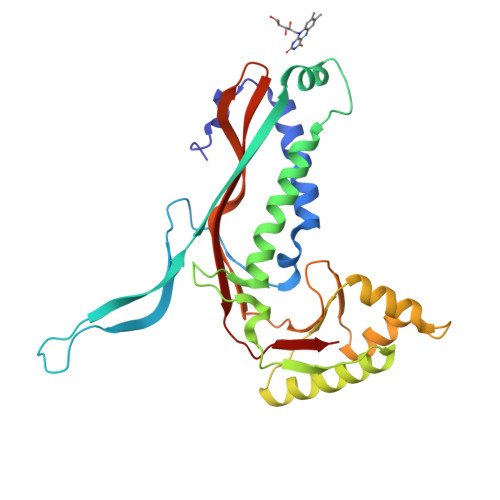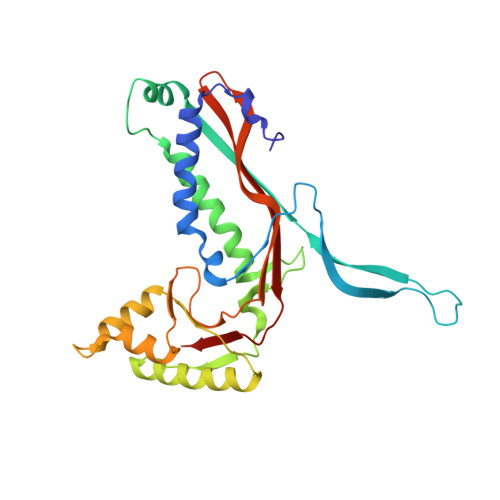Pore structure controls stability and molecular flux in engineered protein cages.
Adamson, L.S.R., Tasneem, N., Andreas, M.P., Close, W., Jenner, E.N., Szyszka, T.N., Young, R., Cheah, L.C., Norman, A., MacDermott-Opeskin, H.I., O'Mara, M.L., Sainsbury, F., Giessen, T.W., Lau, Y.H.(2022) Sci Adv 8: eabl7346-eabl7346
- PubMed: 35119930
- DOI: https://doi.org/10.1126/sciadv.abl7346
- Primary Citation of Related Structures:
7LII, 7LIJ, 7LIK, 7LIL, 7LIM, 7LIS, 7LIT - PubMed Abstract:
Protein cages are a common architectural motif used by living organisms to compartmentalize and control biochemical reactions. While engineered protein cages have featured in the construction of nanoreactors and synthetic organelles, relatively little is known about the underlying molecular parameters that govern stability and flux through their pores. In this work, we systematically designed 24 variants of the Thermotoga maritima encapsulin cage, featuring pores of different sizes and charges. Twelve pore variants were successfully assembled and purified, including eight designs with exceptional thermal stability. While negatively charged mutations were better tolerated, we were able to form stable assemblies covering a full range of pore sizes and charges, as observed in seven new cryo-EM structures at 2.5- to 3.6-Å resolution. Molecular dynamics simulations and stopped-flow experiments revealed the importance of considering both pore size and charge, together with flexibility and rate-determining steps, when designing protein cages for controlling molecular flux.
Organizational Affiliation:
School of Chemistry, The University of Sydney, Camperdown, NSW 2006, Australia.

















